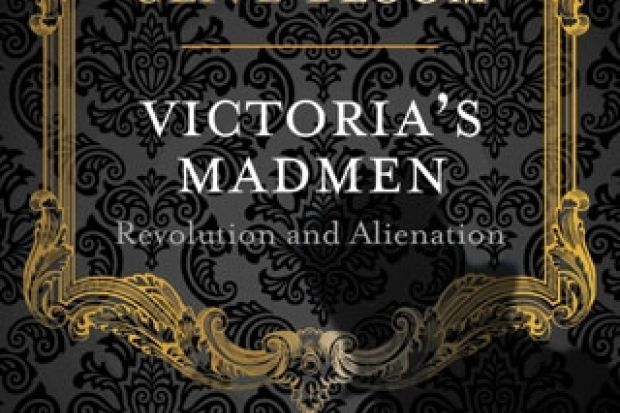Although Victorianism has a number of contested meanings, it is commonly associated with conformity, religious piety, imperialism, industrialisation, social class hierarchies, racial superiority and social etiquette. Yet there were also, claims Clive Bloom in this highly readable book, a large number of people – including revolutionaries, social visionaries, politicians, artists, assassins and seekers of spiritual enlightenment – who shook the stability of Victorian society and the meaning of the self. Some are well known, others neglected. Bloom skilfully rescues these dreamers of a “new Jerusalem” to tell a fascinating story of those men and women who pursued their ideals against the prevailing norms of the day, offering a counter-history to that usually told.
The challenge to Victorian conformity came from a number of new ideas, particularly from Darwinism and spiritualism, which were often in an aggressive debate with each other. It is easy to forget that by the 1870s, spiritualism was all the rage in Britain, especially in London. On a Friday night, one could watch a medium for a shilling or, for the more adventurous, attend a seance for double that sum. Indeed, by the end of the 19th century, spiritualism was so popular that mediums regularly summoned ghosts who told of life in a different world.
The Sunlight League advocated sunbathing, which had been regarded with horror in the previous century
For some reformers, such as Annie Besant, the divorced wife of an Anglican clergyman who lost her Christian faith, other spiritual avenues were attractive. Embracing socialism, anti-imperialism and population control, Besant became increasingly drawn to theosophy. With Madame Blavatsky, a Russian émigrée who had founded the Theosophical Society in 1875, Besant set up a theosophical and socialist club for working girls in the East End of London. Although there was a steady decline in established religious belief during the Victorian era, many reformers saw socialism and Christianity as one and the same thing, as in the Labour Church Movement, which was largely confined to the North.
Unrest in many countries would make 1848 known as the year of revolutions in Europe, and as Victoria’s reign went on, revolutionary extremism increased, especially when émigré revolutionaries sought exile in England. Many joined the English Revolutionary Society, which met in Soho pubs, and others became members of the Social Democratic Federation as it came to adopt a Marxist programme for change. Bloom cautiously reminds us that all these socialist groups never numbered more than a few dozen to a few hundred members, although at any one time they could call upon thousands of supporters when civil liberties were attacked or demands were made for parliamentary reform. “Adherents fell out one moment and cooperated the next,” he asserts, “so that the socialist movement as a whole was ever fluid and unpredictable.” By the mid-1880s, collectivism had become more influential in political life rather than the individualism that had earlier been so important.
The social problems associated with industrialisation and urbanisation led also, in the 1880s, to a “back to the land” movement. Some sought a simpler life, a place where the self could flourish in natural surroundings. “Vegetarian revolutionaries” such as Edward Carpenter and George Bernard Shaw became influential figures. Shaw, unlike Carpenter, also embraced sexual abstinence as healthier and more fitting for his new lifestyle. The emphasis on the body beautiful, outdoor life and natural health encouraged the flourishing of a number of organisations including, in the early 20th century, the Sunlight League. It advocated sunbathing, which had been regarded with horror in the previous century.
This richly diverse book contains a number of gems, but at times the canvas is too broad. The inclusion of Mabel Barltrop, who came to believe that she was a female messiah and who founded the Panacea Society in Bedford after the First World War, sits oddly among the long list of cranks and radicals. And while Sylvia Pankhurst is praised for her embracement not only of feminism but also atheism, anti-imperialism, socialism, internationalism and anti-fascism, Bloom fails to mention that in 19 she became, by choice, a single mother – something considered scandalous at the time. Consideration of such gender issues might have made the author more sensitive to the title of his book – are the lives of women (mad or otherwise) to be assumed under those of men? Nonetheless, Victoria’s Madmen conveys well the bubbling energy of those in the Victorian era who swam against the tide, and many of whose ideas would become the language of counter-cultural modernity.
Victoria’s Madmen: Revolution and Alienation
By Clive Bloom
Palgrave Macmillan, 320pp, £20.00
ISBN 9780230313828
Published 2 August 2013
Register to continue
Why register?
- Registration is free and only takes a moment
- Once registered, you can read 3 articles a month
- Sign up for our newsletter
Subscribe
Or subscribe for unlimited access to:
- Unlimited access to news, views, insights & reviews
- Digital editions
- Digital access to THE’s university and college rankings analysis
Already registered or a current subscriber? Login




